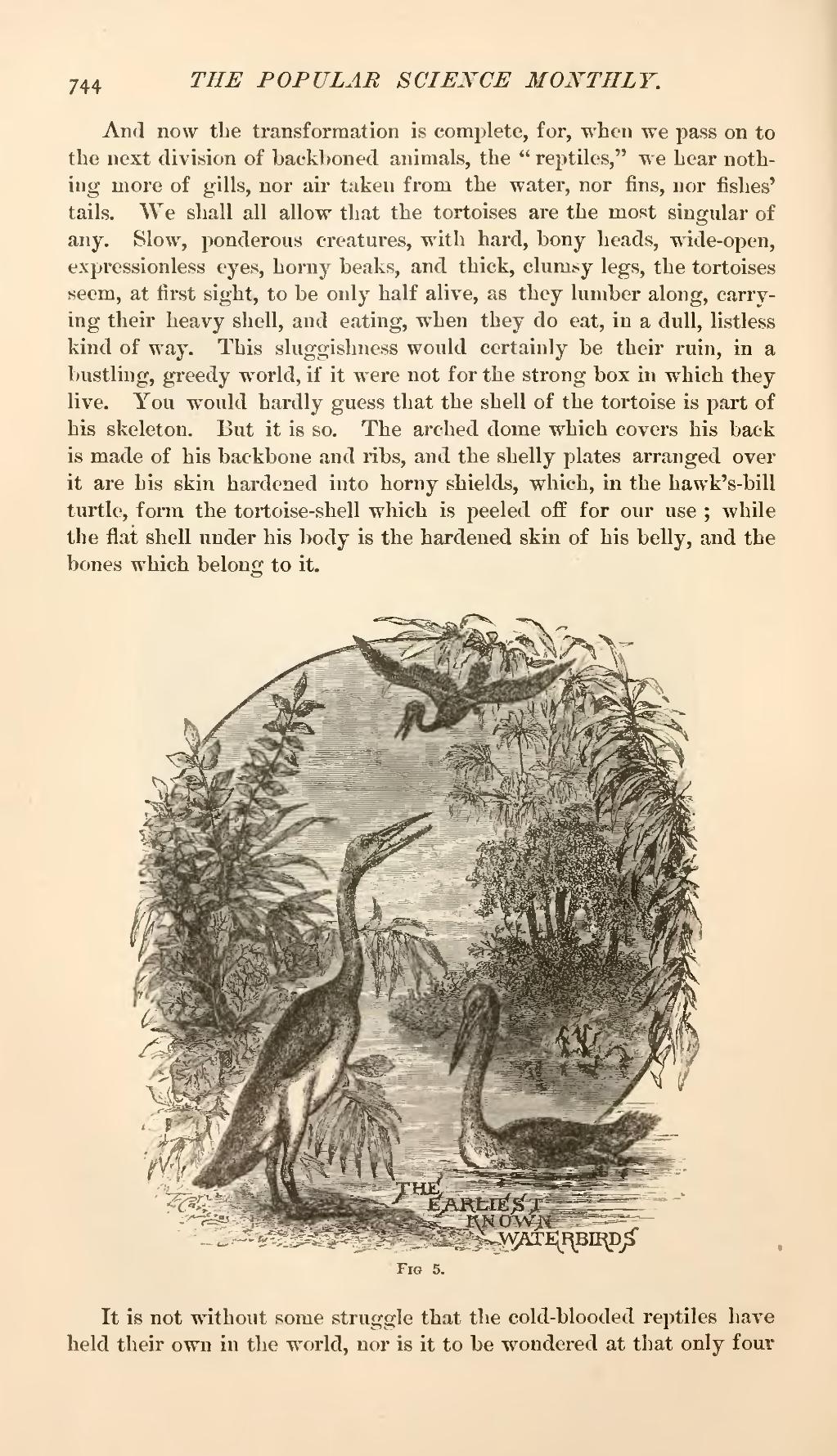And now the transformation is complete, for, when we pass on to the next division of backboned animals, the "reptiles," we hear nothing more of gills, nor air taken from the water, nor fins, nor fishes' tails. We shall all allow that the tortoises are the most singular of any. Slow, ponderous creatures, with hard, bony heads, wide-open, expressionless eyes, horny beaks, and thick, clumsy legs, the tortoises seem, at first sight, to be only half alive, as they lumber along, carrying their heavy shell, and eating, when they do eat, in a dull, listless kind of way. This sluggishness would certainly be their ruin, in a bustling, greedy world, if it were not for the strong box in which they live. You would hardly guess that the shell of the tortoise is part of his skeleton. But it is so. The arched dome which covers his back is made of his backbone and ribs, and the shelly plates arranged over it are his skin hardened into horny shields, which, in the hawk's-bill turtle, form the tortoise-shell which is peeled off for our use; while the flat shell under his body is the hardened skin of his belly, and the bones which belong to it.

Fig. 5.
It is not without some struggle that the cold-blooded reptiles have held their own in the world, nor is it to be wondered at that only four
